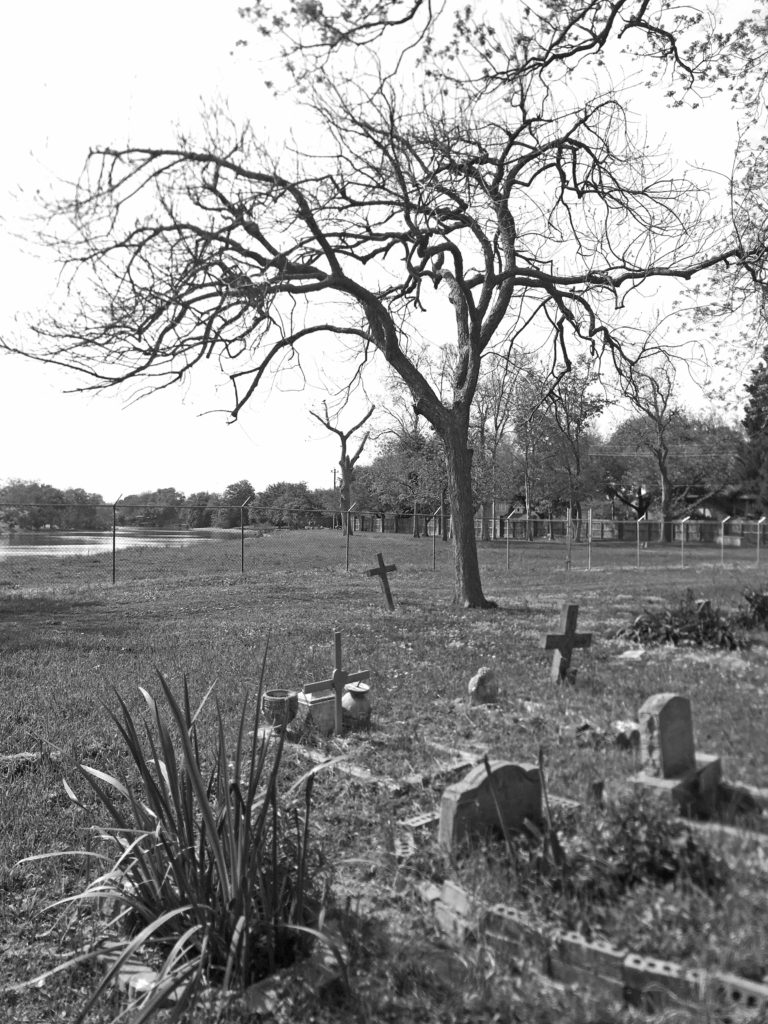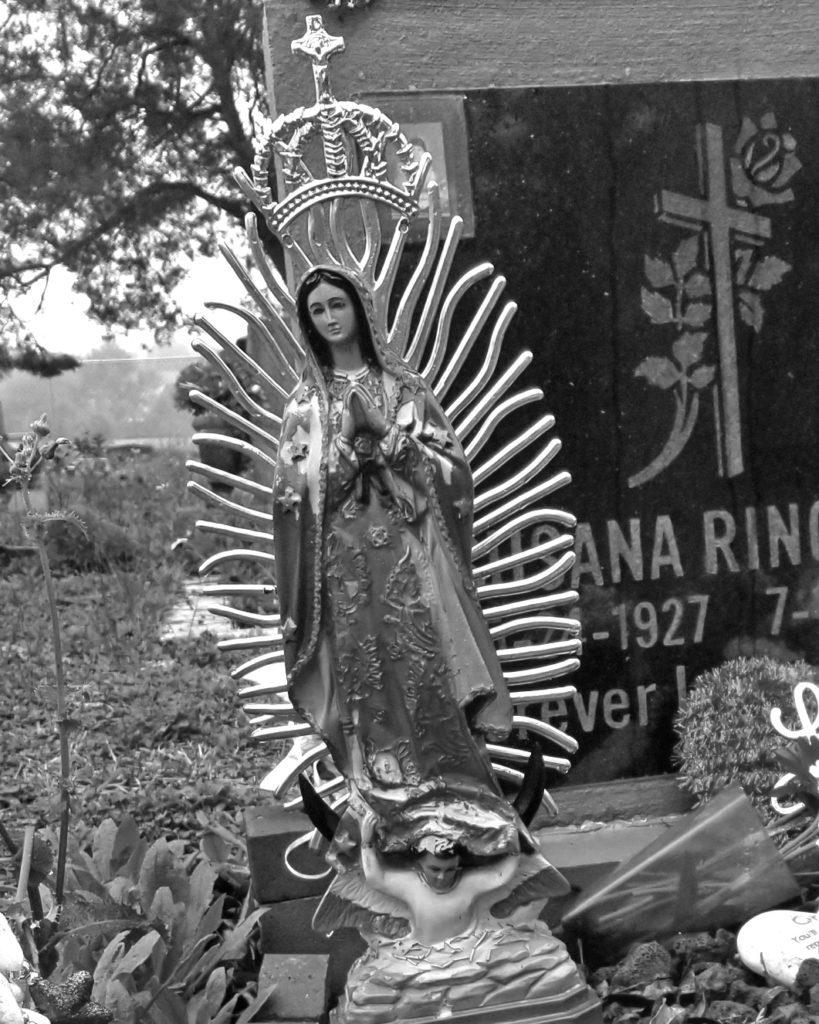By Marie-Theresa Hernandez

Long before Sugar Land was an affluent suburb of Houston, it was known as the home of Imperial Sugar. The company produced and imported sugar cane and processed it in a red brick, six-story building that still stands alongside U.S. Highway 90. Imperial Sugar initially used convict labor to work the fields and refine the sugar, but when this practice finally came to an end in 1914, the company began recruiting Latinx workers from Central Texas and northern Mexico. The company allotted a cemetery near Oyster Creek for Latinx workers.
The cemetery was first called Gran Centro. Later, workers changed the name to Cemeterio San Isidro, the patron saint of farm laborers. It has withstood economic and demographic changes over an entire century, and, through through these changes, Cemeterio San Isidro found itself locked inside a prosperous subdivision where, initially, the striking differences between the old and new created significant tension.

The land was sold to developers in the 1960s, and the communities bordering the sugar cane fields were obliterated, but the cemetery remained. The fields became neighborhoods with brick homes. Tension between the old and the new was palpable. In the 1990s, litigation sought to block access, yet the cemetery survived and has evolved into a cultural and psychological home for Imperial Sugar’s Latinx workers, their families, and their descendants.
The story of Felix Tijerina, a prominent leader of Houston’s Mexican American Community, is entangled with San Isidro. In 1915, Tijerina took a train with his family from Nuevo Leon to Sugar Land, and though the family’s stay was short-lived, it is reported that one of the children passed away and was buried in San Isidro.
In 2019 Cemeterio San Isidro is a serene space, bordered on one side by Oyster Creek. Family members of the deceased farm workers visit often. As the descendants would say, “San Isidro contains the story of the old Mexican community.” It holds the memories of the past, made tangible by the innumerable objects placed on each grave.
The Center for Public History worked with University of Houston students from the History Department and the World Cultures and Literatures Program to produce a series of photographs of San Isidro for Visual Stories: Local and the Global class taught by Marie-Theresa Hernandez. Carmen Flores Perez, who grew up in Sugar Land reminds us there are many stories to tell.
Marie-Theresa Hernandez is Professor and Undergraduate Director of the World Cultures and Literatures Program at the University of Houston. She is the author of Cemeteries of Ambivalent Desire: Deep South Narratives from a Texas Graveyard.
To read the full article click here.

 Follow
Follow